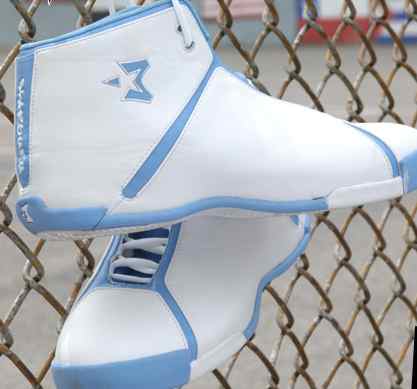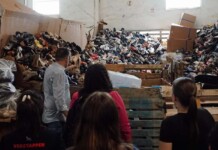 Every year, millions of pairs of athletic shoes are thrown away, clogging landfills and wasting a lot of good material. Now, you can turn your old kicks into new places to play your game.
Every year, millions of pairs of athletic shoes are thrown away, clogging landfills and wasting a lot of good material. Now, you can turn your old kicks into new places to play your game.
Nike gives you a solution for recycling your old shoes! Worn-out athletic shoes of any brand are collected, processed and recycled into material used in sports surfaces like basketball courts, tennis courts, athletic fields, running tracks and playgrounds for young people around the world.
Since the birth of Reuse-A-Shoe in 1990, Nike has recycled more than 21 million pairs of athletic shoes toward more than 265 sport surfaces; giving thousands of young people access to new playgrounds and athletic facilities around the world.
First, take your worn out athletic shoes (of any brand) and go to the nearest Reuse-A-Shoe drop-off location. We have locations at many Nike Stores, other retail stores, athletic clubs, schools and colleges. Reuse-A-Shoe programs are located around the world, in Canada, the U.K., Netherlands, Germany, Australia, and Japan. Search for donation locations here.
With their partner in the U.S., the National Recycling Coalition, your shoes are shipped to one of Nike’s processing facilities in Oregon, or Belgium. There, they are ground up into a material called Nike Grind and used to make different parts of sport surfaces in communities around the world.
You can also send your old shoes to…
Nike Recycling Center
c/o Reuse-A-Shoe
26755 SW 95th Ave.
Wilsonville, OR 97070
To keep the recycling equipment running smoothly, please follow these guidelines:
• Athletic shoes only (any brand)
• No shoes containing metal
• No cleats or dress shoes
• No wet or damp shoes
How Many Old Shoes Does it Take to Pave a Playground?
An average of 10% to 20% Nike Grind by weight is used to create playground and sport surfaces utilizing all three elements from the shoe: Rubber from the outsole, foam from the midsole and fabric from the upper. Generally that translates to the following ratios:
• Outdoor basketball court: 2,500 pairs
• Outdoor tennis court:2,500 pairs
• Full Field or soccer pitch: 50,000 – 75,000 pairs*
• Mini soccer field: 10,000-20,000 pairs
• Running track: 75,000 pairs*
• Playground: 2,500 pairs
• Indoor basketball court: 2,500 pairs
• Indoor synthetic basketball court: 2,500 pairs
• Full-size fields and tracks use an equivalent of rubber from 50,000-75,000 pairs of shoes.
What Else Can be Made With Old Sneakers?
Nike has also created apparel that features trims made with Nike Grind material – including zipper pulls, snaps and buttons that use 50-100% Nike Grind. In the U.S., most Nike Stores use Nike Grind matting in their footwear aisles. The use of specialized Nike Grind tiles is increasing as well. The “green” sports surfaces are also used throughout Nike headquarters and distribution facilities worldwide.
The Nike footwear team has developed more than 50 closed-loop materials as part of an effort to collect waste in the manufacturing of Nike brand footwear, recycle it at one of five waste management centers serving 85% of Nike contracted footwear factories in Asia, and return the recycled material back to materials vendors to be re-introduced into new material for Nike product. They have worked with seven material vendors to create these closed-loop materials, including heel counters, toe boxes, strobels and lining. In addition, outsole scrap is ground up and reused in the manufacturing of new Nike outsoles.




















Great idea! I hate throwing anything out and this is one more way to feel ok by parting with something else I can’t use any longer.